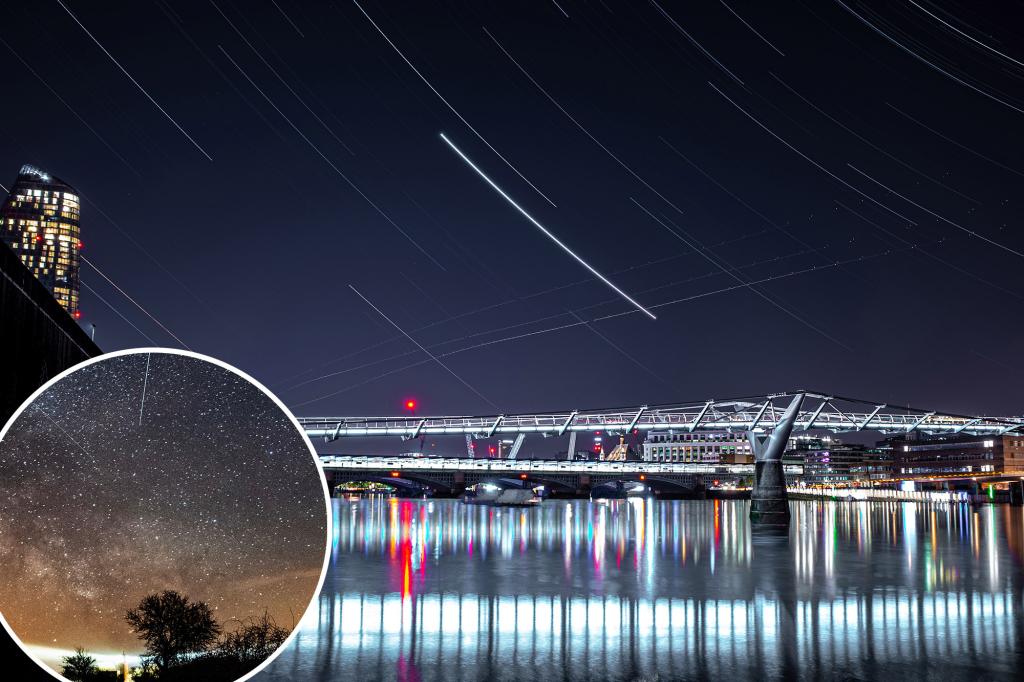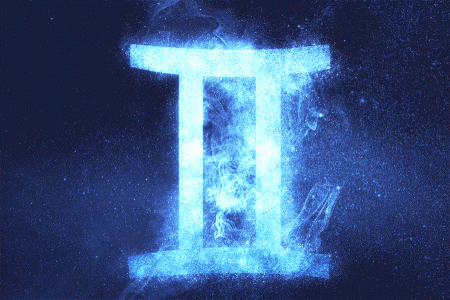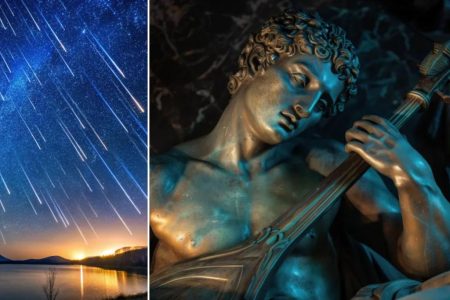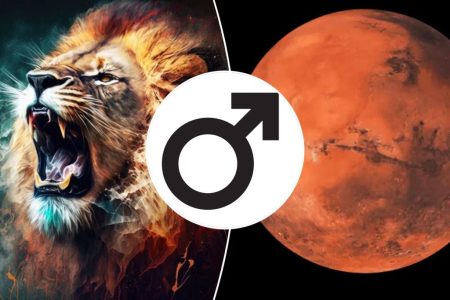The Lyrid meteor shower, one of the oldest-known meteor showers on record, is set to return this weekend. Named for the nearby constellation Lyra, this cosmic phenomenon is composed of debris from the Comet C/1861 G1 Thatcher, discovered by A. E. Thatcher in 1861. Researchers expect the comet to take about 415 years to complete a full orbit.
The Lyrid meteor shower has peaked in late April for thousands of years and began in little bursts on Monday but has not reached its peak just yet. The dazzling display will peak on Saturday night, April 21 going into April 22. The best time to view the meteor shower is in the Northern Hemisphere, after the moon sets below the horizon but before dawn, according to NASA. Stargazers should find a spot away from city lights and allow their eyes to adjust to the darkness for about 30 minutes.
Typically, the Lyrid meteor shower can show off up to 100 meteors per hour, although on average there are about 10 to 20 meteors per hour. These meteors do not streak across the sky but instead produce occasional bright flashes known as fireballs. The Lyrid meteor shower is visible from nearly every country in the world, offering an opportunity for people all over to witness this spectacular celestial event.
To watch the Lyrid meteor shower, viewers should find a spot away from city lights and street lights, allowing their eyes to adjust to the darkness for about 30 minutes. The best viewing time for the Northern Hemisphere will be after the moon has set below the horizon but before dawn. Stargazers can look out for bright flashes in the sky, signaling the passing of the Lyrid meteors.
The Lyrid meteor shower is expected to peak on Saturday night, April 21 going into April 22. This annual event offers the chance for people around the world to witness a natural light show caused by debris from Comet C/1861 G1 Thatcher. With proper viewing conditions and some patience, viewers can enjoy the sight of meteors streaking across the night sky, providing a stunning and memorable experience.















